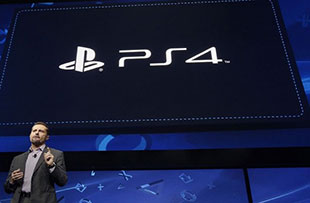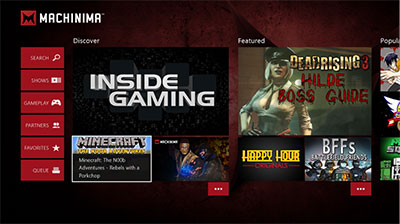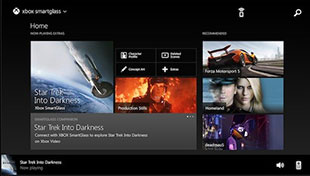![]() Second screen viewing took another decisive step towards your living room with the launch of the PS4 and Xbox One games consoles last week.
Second screen viewing took another decisive step towards your living room with the launch of the PS4 and Xbox One games consoles last week.
Now lined up in direct competition with smart TVs to provide a domestic media hub, both Sony and Microsoft are looking to cover all bases… including making use of second screen working to expand their gaming. How is the next-gen console shaping up?
 Pre-launch speculation on how each console would be received ended when the PS4 shifted more than 250,000 units in the UK within 48 hours of its release, beating the Xbox One’s 150,000 sales in the same period. The PS4 topped 1m units on launch in North America alone, with the Xbox One clocking up its 1m across 13 territories. For the record, the PS4 is now the fastest-selling console to date, deposing Sony’s PSP; both consoles sold more in two days than Nintendo’s Wii U has sold since it was launched in November 2012.
Pre-launch speculation on how each console would be received ended when the PS4 shifted more than 250,000 units in the UK within 48 hours of its release, beating the Xbox One’s 150,000 sales in the same period. The PS4 topped 1m units on launch in North America alone, with the Xbox One clocking up its 1m across 13 territories. For the record, the PS4 is now the fastest-selling console to date, deposing Sony’s PSP; both consoles sold more in two days than Nintendo’s Wii U has sold since it was launched in November 2012.
As noted in an earlier blog (Next-Gen: Breaking the Games Sound Barrier), the PS4 and Xbox One have a lot of tech in common, with Sony seemingly having made a better job of its implementation. They also have the cloud in common – using cloud storage and computing to greatly enhance their onboard capabilities. Together, they usher in ‘next-gen’ games technology.
In a post titled ‘The baffling incompetence of the Xbox One interface’, Edge was unapologetically critical of Microsoft’s ‘app’ approach to its interface, however: ‘they take too long to load, don’t offer the functionality that the Xbox Live network was built on, and are, inexplicably, badly handled by the OS’, it says. ‘The most bewildering thing is that Microsoft has deliberately restricted the machine’s gaming ability to do all of this, locking off a chunk of system resources for apps and OS, and then singularly failing to exploit it.’
A lot of Edge’s ‘all of this’ refers to the social media aspects of the Xbox One. For non-gamers, social media is often limited to Facebook and Twitter but it has far greater significance to gamers. There is an established tradition of sharing gameplay online, through Xbox Live and the PlayStation Network (PSN), and using a console’s ability to record it as sequences of events that its engine can replay in real-time.

Microsoft should have had a lead with its tie-in with the Twitch.tv e-sports and gaming live streaming site, but failed to have the service ready at launch. Edge reckons that this proved to be the most significant failure of the Xbox One launch – ‘the removal of a marketing tool that even Microsoft’s millions will struggle to replace’.
‘Beyond Sony’s superior early sales figures, you can see it play out on social media as people tentatively sign up to PSN for the first time, after years of Xbox Live,’ it adds. ‘Once there, they start sharing: screenshots and Twitch footage is how games and platforms are marketed in this new generation, and Microsoft has launched with no easy way to do either.’
Sony Computer Entertainment, meanwhile, struck a formal agreement in 2012 to acquire cloud-based gaming service Gaikai for US$380m, with the aim of establishing a new cloud-based gaming service.
An early service that made sharing gameplay independent of a specific console engine, a website called machinima.com appeared in 2000, offering tutorials, interviews and articles. With the Xbox One launch, Machinima has produced its own Wingman Xbox One App, using the console’s Snap feature to allow apps to run alongside each other, or alongside a TV show or video game. Some of the videos from the app will be exclusive to the Xbox One platform, while others will relate to the games being played.
‘It can pull up contextually-relevant content, tips and tricks, tutorials,’ explains Sanjay Sharma, Executive VP of Strategy & Business Development for Machinima. ‘As it evolves, we’ll know in real time what level you’re in, what moment you are at. It might note, “You’ve lost this boss fight ten times in a row – here’s how we can help”.’
Second helping
 Machinima’s plans for the app are likely to include the new Xbox One SmartGlass app, providing the ability to see and share gaming videos created by users on a mobile device. The Xbox SmartGlass app has been around for some time, providing connectivity and control for the Xbox 360 through a mobile device acting as a second screen. In fact, both Microsoft and Sony launched iOS apps ahead of their new consoles.
Machinima’s plans for the app are likely to include the new Xbox One SmartGlass app, providing the ability to see and share gaming videos created by users on a mobile device. The Xbox SmartGlass app has been around for some time, providing connectivity and control for the Xbox 360 through a mobile device acting as a second screen. In fact, both Microsoft and Sony launched iOS apps ahead of their new consoles.
‘While the previous game console generation was all about motion controls, it's clear that the new machines will use second screen functionality and apps as major weapons of war,’ wrote Mike Wehner on The Unofficial Apple Weblog (TUAW). Judging the Xbox One SmartGlass app to be ahead of the PlayStation App at this point, Wehner is convinced that they indicate the direction being taken by next-gen games systems.
ExtremeTech’s Grant Brunner agrees that Sony and Microsoft are placing high value on the second screen, but notes that the PlayStation app ‘serves as a way for developers to deliver touch-based gameplay on the PS4 without having to develop their own apps from scratch’. And he gives the lead to Sony, rather than Microsoft…
‘It appears that Sony is miles ahead on the game-streaming front, and it sells a device that is actually designed to play games wherever you are,’ he says. ‘Streaming games to the Vita [Sony’s handheld game console] is a no-brainer at this point, and will offer a much better experience than gaming on a tablet or smartphone. Even if Microsoft can catch up with Sony’s progress in terms of streaming tech, the available mobile hardware just can’t compare. Provided that Sony continues to execute on its impressive promises, the Vita might just seal the PS4’s fate as the winner of the next generation.’
There is another issue surround both of these consoles – 4K video. Officially termed Ultra HD and able to deliver 3840 x 2160 picture resolution at 60Hz, Sony is leading the move to higher resolution with a number of 4K television sets and a 4K player already on the market. Both Sony and Microsoft have made reference to 4K in the run up to their respective consoles’ launch, and both are keeping their options open. But neither has yet delivered.
For audio, both the PS4 and Xbox One carry HDMI and SPDIF outputs, supporting 7.1-channel surround audio. Both have abandoned support for SD resolutions and analogue component HD, but the SPDIF optical output will handle stereo and surround for legacy A/V systems.
It is early days for next-gen, but the promises that have been made on its behalf leave no doubt as to its significance. The endorsement it gives to the second screen seems almost incidental, but are a further guarantee of its place in home entertainment systems to come. It’s role, however, is still being defined.

